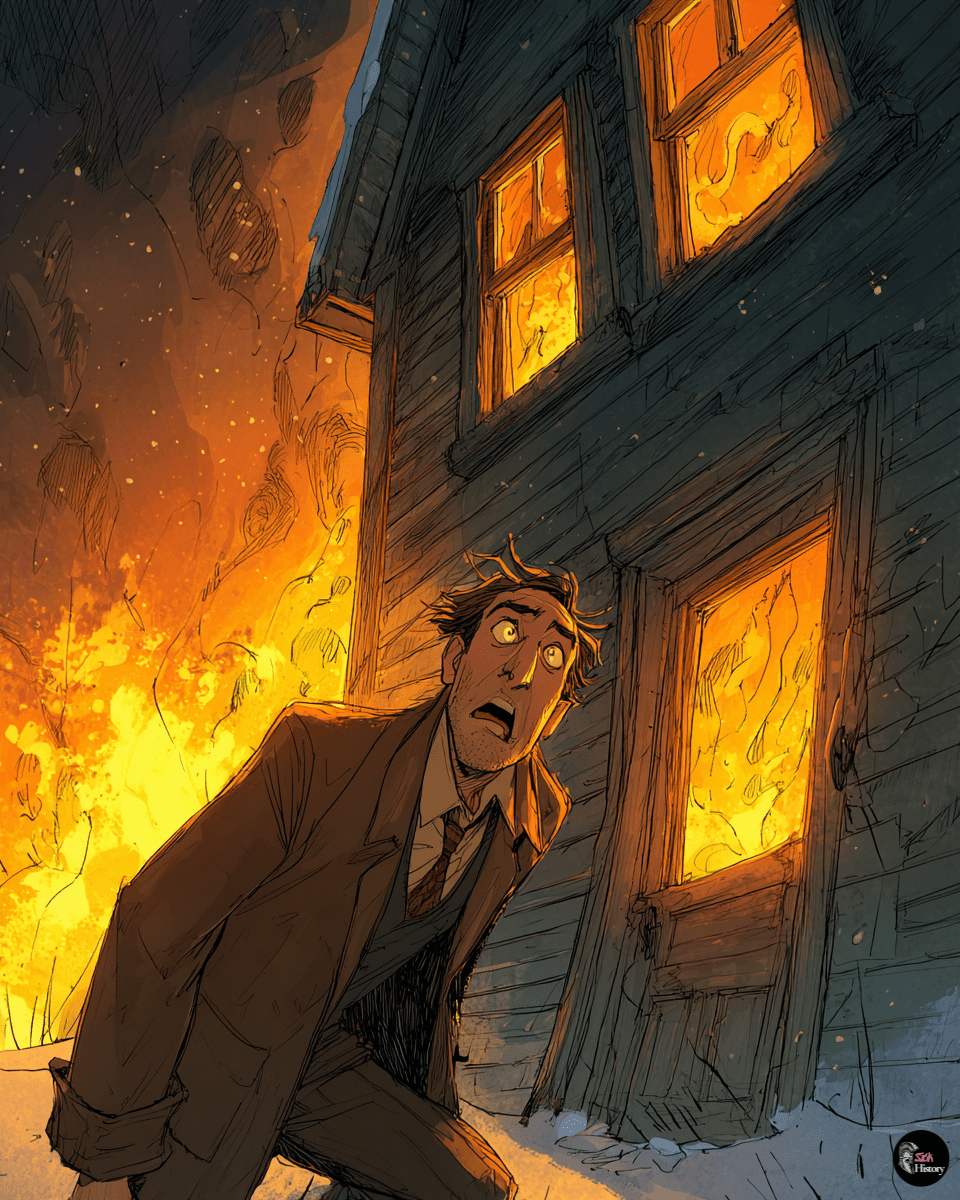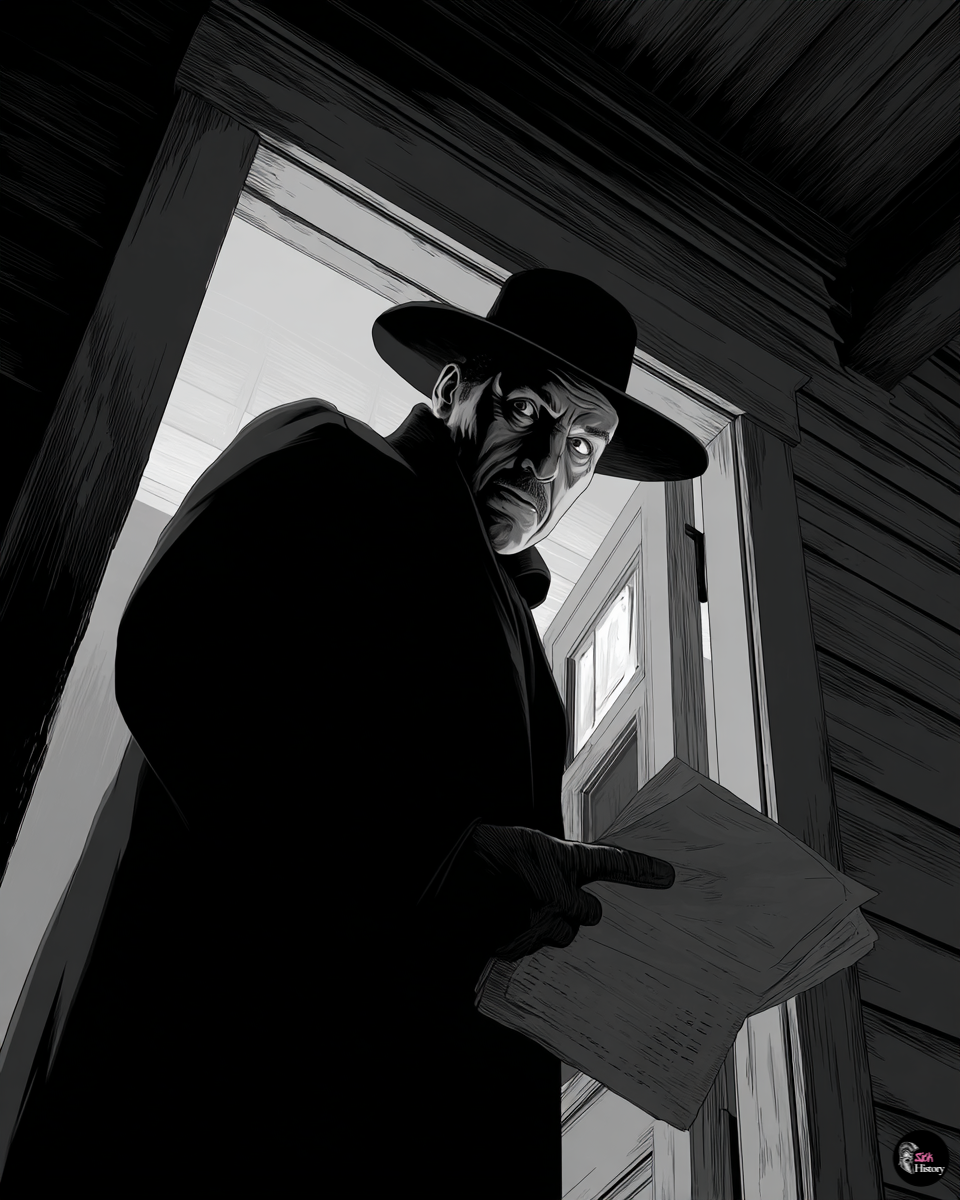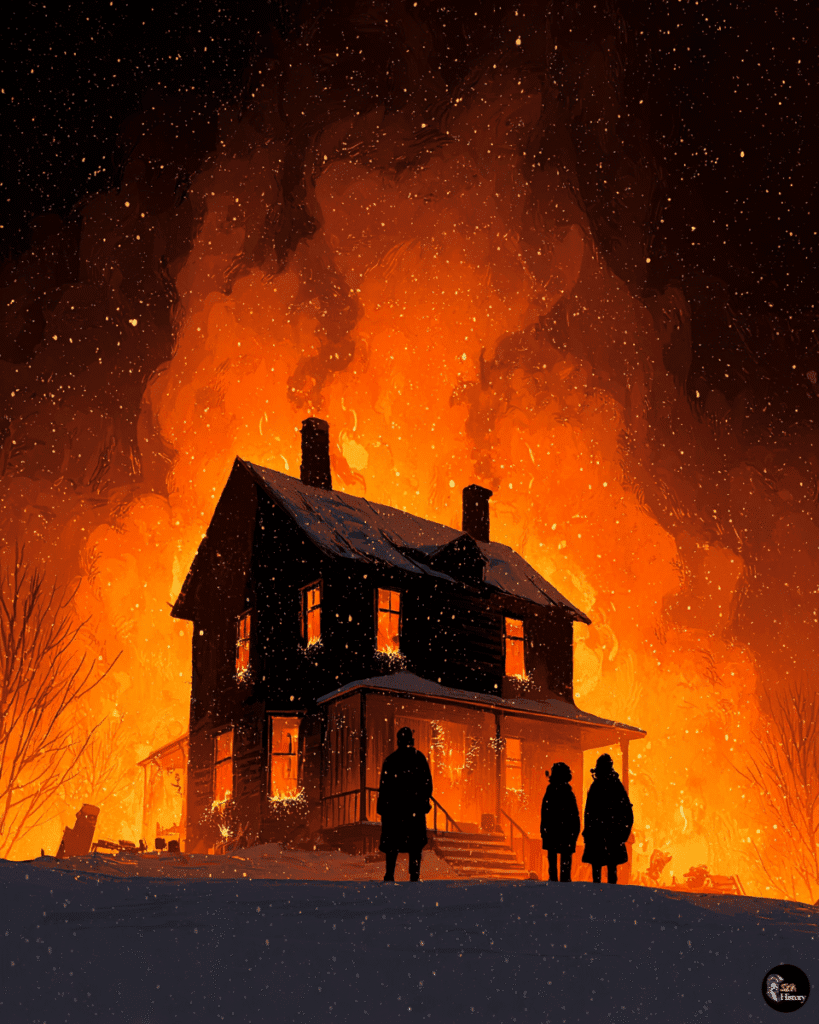Picture this: it’s Christmas Eve 1945, and you’re tucked into bed dreaming of Santa Claus and presents under the tree. You drift off to sleep in your cozy West Virginia home, surrounded by your siblings and parents. By morning, five of those children have vanished from existence, leaving behind no trace except a pile of ashes and one of America’s most haunting unsolved mysteries.
The Sodder children disappearance isn’t your typical house fire tragedy. When flames engulfed the Sodder family home in Fayetteville, West Virginia, on Christmas Eve 1945, it should have been a straightforward—if heartbreaking—story. House catches fire, family escapes or perishes, investigators determine the cause, life moves on.
Instead, five children—Maurice (14), Martha (12), Louis (9), Jennie (8), and Betty (5)—simply evaporated into the winter night, launching an 80-year mystery that continues to haunt America.
No bodies. No bone fragments. No teeth. No clothing remnants. Nothing. It’s as if the children walked through a portal to another dimension, leaving their parents to spend the rest of their lives wondering if their kids were dead, kidnapped, or living secret lives somewhere across the country.
Christmas Eve in Hell: When Everything Went Wrong
The Sodder family seemed to have everything going for them in 1945. George Sodder, an Italian immigrant turned successful businessman, had built a thriving trucking company and provided well for his wife Jennie and their ten children. They lived in a comfortable two-story frame house, and Christmas Eve 1945 was shaping up to be a wonderful holiday celebration.
The Night Everything Changed
As the family settled in for the night on December 24, 1945, nine of the ten Sodder children were home (the eldest, Marion, was married and living elsewhere). The house was decorated for Christmas, presents waited under the tree, and the family had every reason to expect a joyful morning ahead.
Around 1:00 AM on Christmas morning, Jennie Sodder woke to the smell of smoke. The house was on fire, and flames were already spreading rapidly through the structure. In the chaos that followed, George and Jennie managed to escape with four of their children: Sylvia, John, George Jr., and baby Jim.
But five children remained unaccounted for: Maurice, Martha, Louis, Jennie, and Betty. They had been sleeping in the upstairs bedrooms, and now those rooms were an inferno.
When Rescue Becomes Impossible
Here’s where the story shifts from tragic to sinister. George Sodder was a practical man who kept a ladder leaning against his house for maintenance work. When he rushed to retrieve it to reach the upper windows and save his children, the ladder was gone. Vanished. Not blown over by wind or knocked down—completely missing.

Panicking, George ran to his coal truck, thinking he could drive it close to the house and climb onto the cab to reach the second-floor windows. The truck, which had worked perfectly the day before, wouldn’t start. The engine was dead as a doornail.
Neighbors were called to help, and someone contacted the fire department. But in a town where the fire station was only two miles away, it took the firefighters seven hours to arrive. Seven hours. By then, the Sodder home had been reduced to a smoldering pile of ash and twisted metal.
The Investigation That Raised More Questions Than Answers
When the fire chief and investigators sifted through the ruins, they made a discovery that should have brought relief but instead launched a decades-long nightmare: there were no human remains in the ashes. None. Not a single bone fragment, tooth, or piece of clothing belonging to the five missing children.
The Official Story Falls Apart
The initial investigation concluded that faulty electrical wiring had caused the fire, and the missing children had been consumed entirely by the flames. Case closed, according to local authorities. The intense heat, they claimed, had completely cremated the five young bodies, leaving nothing behind.
But George Sodder wasn’t buying it. He knew that house fires, even devastating ones, don’t typically burn hot enough to completely destroy human remains. Professional crematoriums use temperatures of 1,400-2,100°F for hours to reduce bodies to ash, and even then, bone fragments usually survive. House fires rarely exceed 1,000°F.
Determined to find answers, George hired a private investigator and even bulldozed the site himself, searching for any trace of his children. His excavation turned up some interesting items—household objects that had survived the fire—but no human remains whatsoever.
The Billboard That Broke Hearts
Convinced that his children were alive somewhere, George erected a billboard along Route 16 featuring photographs of the five missing children and offering a substantial reward for information. The haunting display became a landmark for decades, reminding every passing driver of the family’s anguish and determination.
The billboard read: “MISSING: These five children have been missing since Dec. 24, 1945. If you have seen any of them or know anything about them, please contact the State Police or the Sodder Family.” Below were the faces of five children who would never grow up—at least not in their family home.
Sinister Signs and Suspicious Circumstances
As George and Jennie dug deeper into the events surrounding the fire, they uncovered a series of disturbing incidents that suggested the tragedy might not have been accidental.
The Ominous Visitor
Just weeks before the fire, a strange man had appeared at the Sodder home claiming to sell life insurance. When George declined the policies, the man became aggressive and made an ominous comment about George’s house: he pointed to the fuse box and said George’s house would go up in smoke, and his children would be destroyed. He also mentioned that George’s outspoken criticism of Italian dictator Benito Mussolini had made him enemies.

The encounter left George unsettled, but he dismissed it as the ramblings of an unbalanced salesman. After the fire, the man’s words took on a much more sinister significance.
The Mafia Connection Theory
George Sodder’s Italian heritage and vocal opposition to Mussolini had indeed made him unpopular in certain circles. He had been outspoken about his anti-fascist views and had even publicly criticized Mussolini’s regime. Some members of the local Italian-American community, particularly those with fascist sympathies, viewed George as a traitor to his homeland.
This led to theories that the fire was orchestrated as revenge, with the children kidnapped and taken to Italy or placed with Italian-American families who would raise them under new identities. Supporters of this theory pointed to several suspicious elements:
- The mysterious disappearance of George’s ladder
- His truck’s sudden mechanical failure
- The fire department’s inexplicably delayed response
- Reports of strange cars and unfamiliar people in the area before the fire
Cold War Paranoia
As the 1940s gave way to the 1950s and Cold War tensions escalated, new theories emerged. Some speculated that the children had been kidnapped by communist agents, possibly due to George’s business connections or as part of some larger espionage operation. These theories gained traction during the height of McCarthyism, when Americans saw communist plots behind every unexplained event.
While these Cold War theories captured public imagination, they remained as unsubstantiated as the mafia connections. But in an era when anything seemed possible, even the most outlandish explanations found believers.
A Mother’s Unwavering Hope
While George pursued investigations and theories, Jennie Sodder maintained an even more heartbreaking vigil. She kept the missing children’s bedrooms exactly as they had been on Christmas Eve 1945. Clothes remained in dresser drawers, toys sat on shelves, and beds stayed made—waiting for children who might never return.
Jennie wore black for the rest of her life, a living monument to her grief and her unshakeable belief that her children were alive somewhere. She refused to hold funeral services, insisting that without bodies, there was no proof of death. Every Christmas Eve became a renewed nightmare of hope and despair.
Sightings and False Leads
Over the years, reported sightings of the Sodder children emerged from across the United States and even internationally. These ranged from credible-seeming encounters to obvious cases of mistaken identity:
- A woman in a hotel bar claimed to be Betty Sodder and said the other children were also alive
- A girl in a Florida convent bore a striking resemblance to Martha
- Multiple reports came from people who claimed to have seen some or all of the children in various states
- A photograph allegedly showing an adult Louis Sodder was sent to the family in the 1960s
Each lead was investigated by the family, private detectives, or law enforcement, but none ever produced concrete evidence. The sightings provided cruel hope followed by crushing disappointment, extending the family’s agony for decades.
The FBI Gets Involved
In 1947, two years after the fire, the FBI officially entered the case. Federal agents conducted their own investigation, interviewing witnesses, examining evidence, and following leads across state lines. But even with federal resources and expertise, the case remained frustratingly unsolved.
The FBI’s involvement lent credibility to the theory that the children had been kidnapped rather than killed in the fire. After all, if this were simply a house fire with unfortunate victims, why would federal agents spend years investigating?
Yet despite extensive efforts, the FBI ultimately reached the same conclusion as local authorities: insufficient evidence to determine what had happened to the five missing children. The case remained open but inactive, joining the growing file of America’s unsolved mysteries.
Legacy of a Mystery
George Sodder died in 1969, having spent 24 years searching for his children. Jennie continued the vigil until her death in 1989, never abandoning hope that her children were alive somewhere. The billboard came down in the 1980s, but the mystery it represented lived on.
The Sodder children case became one of America’s most famous unsolved disappearances, inspiring books, documentaries, and countless discussions among amateur sleuths. It highlighted serious flaws in rural fire investigation procedures and missing persons protocols of the 1940s, potentially leading to improvements that benefited future cases.
More than anything, the Sodder mystery serves as a haunting reminder that sometimes the most important questions—What happened to those children? Are they still alive? Did someone steal five kids on Christmas Eve?—never get answers. In a world where we expect closure and resolution, the Sodder children remain forever frozen in time: five kids who went to bed on Christmas Eve 1945 and vanished into the winter night, leaving behind only heartbreak and one of America’s most enduring mysteries.
Somewhere out there, if they survived, Maurice would be 93 years old today. Martha would be 91. Louis, 88. Jennie, 87. Betty, 84. If they’re still alive, do they remember their real names? Do they know their parents spent their entire lives searching for them? Or did five children really disappear into thin air on Christmas Eve, taking their secrets with them into eternity?

